Garden Brick Wall Cost in 2024
Last updated 16th September, 2024
Looking to find out how much it costs to build a garden brick wall in the UK?
The estimated brick wall cost that you'll be quoted by tradespeople in the UK is between £800 – £1,200.
In this guide, we'll cover everything you need to know about building a garden wall.
In particular, we take a look at the different bricks you can get, and how the cost of a brick wall per m² is impacted by this and other other factors.
The bottom line is this:
This guide makes it easy and simple for you to calculate the estimated cost of building a garden wall.
Let's get started.
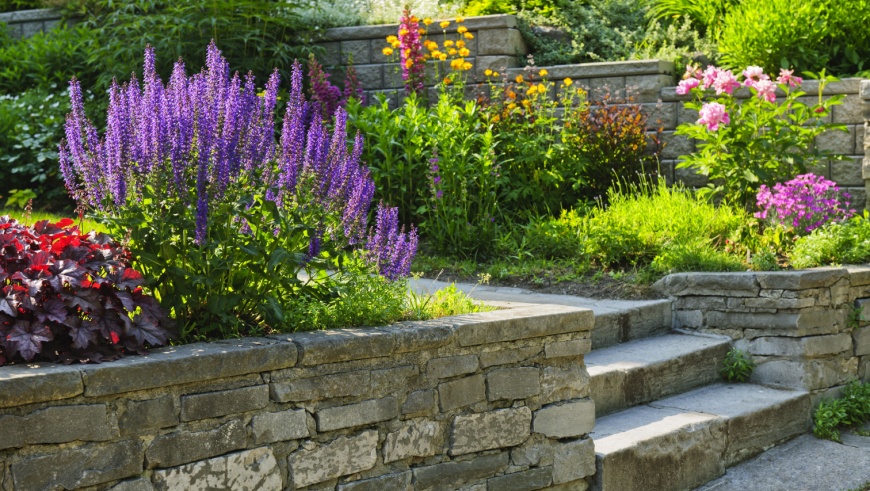
How Much to Build a Brick Wall?
Let's get straight to it:
How much does it cost to build a brick wall in the UK?
The average cost of a brick wall ranges between £800 - £1,200.
The price you're quoted by a tradesperson for a new brick garden wall depends on the type of bricks you want, the height and length of the wall, and how thick you want it to be.
The typical height of a garden wall is between 1 – 2 metres. The price of a brick wall in the garden will vary depending on the length of it, as well how thick you want it to be ('single skin' or 'double skin').
Here's what this looks like:
The cost of a single skin garden wall that's 1m high and 4m long will be approximately £650, whereas a 1m high and 12m long brick wall costs around £1,400.
If you're looking to have a double skin garden wall built, then the price increases to approximately £750 for a 1m high and 4m long garden wall and around £1,500 for a garden wall that's 1m high and 12m long.
Let's dig a bit deeper now.
Table of Contents
- How much to build a brick wall?
- Labour cost and time frames
- What does building a garden wall entail?
- Factors impacting garden wall costs
- How big can my garden wall be?
- Brickwork bonding options
- Things to consider before hiring a bricklayer
- DIY garden wall
- New garden wall benefits
- Cost of building a retaining garden wall
- Party wall agreement
- Boundary walls/party walls
- Conservation areas and listed buildings
- Garden wall repair cost
- Alternatives to a garden wall
- Walls vs fences
- Garden wall removal cost
- How to find & hire a bricklayer to build a garden wall
- FAQs
- Sources
Brick Garden Wall Costs
The table below summarises the average cost of a hiring a tradesperson to build a 1 metre high garden wall of various lengths and thicknes.
| Size of wall | Wall Thickness | Garden Wall Cost | Job Duration |
|---|---|---|---|
| 1m high by 4m long | Single skin | £650 | 1 – 2 days |
| 1m high by 8m long | Single skin | £1,100 | 2 days |
| 1m high by 12m long | Single skin | £1,400 | 2 – 3 days |
| 1m high by 4m long | Double skin | £750 | 2 days |
| 1m high by 8m long | Double skin | £1,200 | 2 – 3 days |
| 1m high by 12m long | Double skin | £,1500 | 3 days |
Brick is one of the cheapest materials to build a wall with, but the price can often double when using stronger or thicker materials.
If you hire a landscaper to build a garden wall which is 1m high by 4m long, prices can range from £750 for coping, £1,000 for flint and £1,200 for slate.
Garden Brick Wall Supply Costs
The cost of materials adds up to around £160 for a 1m high and 4m wide double skinned brick wall. The materials needed for supply include cement, sand, bricks, and plasticiser.
- Sand: £22.50 for 225kg (9x 25kg bags)
- Cement: £12 for 75kg (3x 25kg bags)
- Plasticiser: £5 - £10
- Bricks: £120 for 236 engineering bricks
Brick is the most popular option, but there are many varieties of brick — including reclaimed bricks, which can demand very high prices.
Although brick is the most popular option, there are many different materials available to use to build garden walls. They all have different benefits, including aesthetics, endurance, strength and stability.
The table below shows the average cost of different materials per square metre:
| Materials | Avg. Cost per Square Metre |
|---|---|
| Bricks | £50 - £300 |
| Natural stone | £60 - £125 |
| Concrete | £40 - £55 |
| Facing bricks | £55 - £75 |
| Flint | £100 - £120 |
| Sandstone | £70 - £130 |
| Slate | £100 - £150 |
| Coping | £15 - £80 |
Additional Brick Wall Costs
When building a new garden wall, it may be worth considering what other areas of your garden need renovating (or jobs that could be scheduled for the same time).
First, you might want to think about fitting a gate, which secures the entrance or exit to your property. The average gate installation cost is £750.
Second, it might be the right time to consider laying down new garden turf. On average, the supply, preperation, and laying of garden turf costs between £650 – £750 for a 50 square metre garden. This equates to a cost of around £15 per square metre.
For added security, you could also look at installing an external light. The cost to install an outside security light is between £125 - £150.
Here are some other jobs that you might also want to consider:
- Garden Decking Installation: Costs between £450 – £1,200 for a 10m² of decking to be installed.
- Laying New Patio: Costs between £800 – £1,500 for around 10m² of patio to be installed.
- Tree Trimming & Pruning: Average cost of £450 to trim a 25ft tree and remove waste.
- Garden Shed Installation: Costs between £600 – £1,100 to install a wooden shed.
- Ongoing Garden Maintenance: Around £30 – £50 per visit by a professional gardener.
Cost Breakdown Calculator
Here is a breakdown of the costs for a 1m high and 4m wide double-skinned garden wall.
Total Cost: £750
Materials
£225
Tradesman
£450
Waste Removal
£75
Labour Costs and Time Frames
Building a garden brick wall usually takes between 1 - 4 days if you have a standard UK garden size of 15m.
The length of time will extend depending on the scale of the project. An average single skin brick wall size of 1m high by 4m long can take around a day and a half, whereas a double skin wall of the same length can take two days.
Different things can increase the cost of hiring someone to do this job. This includes whether you're building a high brick wall, accessibility to the location where the wall is being built, pre-removal of any gate or fence panels, and waste removal.
It’s typical for two workers to take on the job, including one labourer and one skilled bricklayer. They will usually charge around £250 per day for both of them. They might include the cost of cement and sand in their labour costs, but not the cost for bricks or waste removal.
What Does Building a Garden Wall Entail?
There are a number of ways to build a garden wall, but generally, the job will entail the removal of existing structures (like a fence or wall), preparation of groundwork including foundations, supply of all materials (bricks, the sand/cement/mortar mix, and any posts/copings), laying of footings and the bricks, plus removal and disposal of all waste and clean up after the wall.
This sounds like a lot of hard work, and it is! Which is why most will hire tradespeople to do the work for them rather than take on the task themselves. Tradespeople can take 2 - 3 days working on building a garden wall, depending on the size and skin choices.
Day One
The first day will consist of planning the site area, removing any old fences and posts, digging out the trench and laying the concrete footings.
Day Two
The second day is when the majority of bricklaying happens. Workers will mix the mortar, lay the bricks and build up from there. This task is quite simple but can take a while to complete depending on the length and thickness of the wall.
Day Three
A third day is usually needed for any bigger projects or if the wall is double skinned. This day is a continuation of the day before of bricklaying and waste removal when finished.
Remember, take into consideration that each project is completely different and can differ depending on the number of workers, materials needed and size of the wall and garden.
Factors Impacting Garden Wall Costs
Building a garden wall is a fairly big undertaking and could come with additional costs depending on your individual circumstance.
For instance, you might have a lot of earth that needs excavating and disposing of. And if you're building a new garden wall to replace an existing fence or wall, you'll have to consider the cost of disposing of that too.
The average skip hire cost is between £200 – £400. Depending on what you need to dispose of, it can work out cheaper and easier to find a local 'man with a van'. The average cost of a local man with a van is £150, and will enable you to dispose of about 20 bin bags worth of waste.
You can opt for DIY removal of existing structure. However, this can be a demanding task and might take up a significant amount of time. You are best sticking with a professional who can effectively and efficiently do this type of job.
You should also factor in the exact material or decorative materials that you’d like to use as this can increase the cost significantly.
If your wall is a retaining wall, then it will need deeper and wider foundations. It can often be that the base of the wall will also be wider, and there will be more piers/pillars. This means more brickwork for the bricklayer, which will increase the time it takes to complete this project.
A retaining wall can also benefit from some type of waterproofing membrane to help minimise the build-up of hydrostatic pressure which is typically an average cost of £70 to cover 10m2.
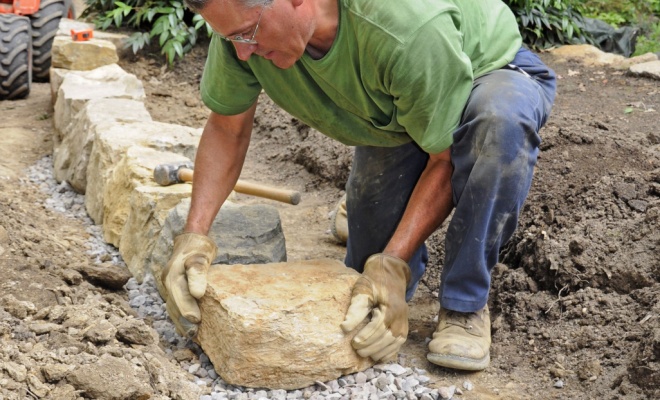
Walls to the rear of a property will often be more expensive due to the fact that bricks and other building material will usually have to be carried into the rear garden adding labour time to the job.
This is made worse if the property has access problems and all materials have to be carted through the house!
The different types of brick material will also affect the cost:
Engineering Bricks Price
Engineering bricks are tough, strong, resilient, and resistant to water and icy weather. This makes them perfect for sewers, groundworks, and retaining walls.
Some types of enginnering bricks can be quite expensive though. The cost of engineering bricks is between £50 - £75 per m2.
Reclaimed Bricks Price
Reclaimed bricks are recovered from old brickworks and structures, and have mortar cleaned away from them. Cleaning and sorting through reclaimed bricks is extremely labour-intensive, which is why they often cost twice as much as a normal brick.
The average cost of reclaimed bricks is between £100 - £300 per m2. There's a wide price range as the exact cost depends on the type of reclaimed brick you're after.
Common Concrete Bricks Price
Common concrete bricks are one of the cheapest options you can choose. They're extremely durable — and can actually gain strength with age. However, they aren't the most aesthetically appealing option.
The typical cost of common concrete bricks is between £40 - £55 per m2.
Facing Bricks Price
Facing bricks are typically used for external use above ground level. These are high quality and durable bricks which have an appealing look.
On average, facing bricks cost between £55 - £75 per m2.
Wirecut Bricks Price
Wirecut bricks are cut into individual bricks by using a wire, with lots of different colours and textures to choose from.
They’re an affordable option too, with typical prices for wirecut bricks being between £55 - £80 per m2.
Handmade Bricks Price
Handmade bricks are made in moulds on a bench and often have the most intricate and costly facings.
These types of bricks are commonly used in prestige building projects and will cost between £90 - £140 per m2.
How Big Can My Garden Wall Be?
There will normally be no permission required as long as the wall is one metre or less in height.
If you are demolishing an existing wall greater than one metre tall, you can also replace the wall up to the previous height without any planning permission. However, it’s advised that any wall higher than 1.2m should be designed by a structural engineer.
Even if your wall is less than 1m tall, you should still check your boundary and listings around your property before doing anything. If you’re ever thinking of undertaking a big task in your garden, always consult with a professional who can help you identify costs and risks.
Brickwork Bonding Options
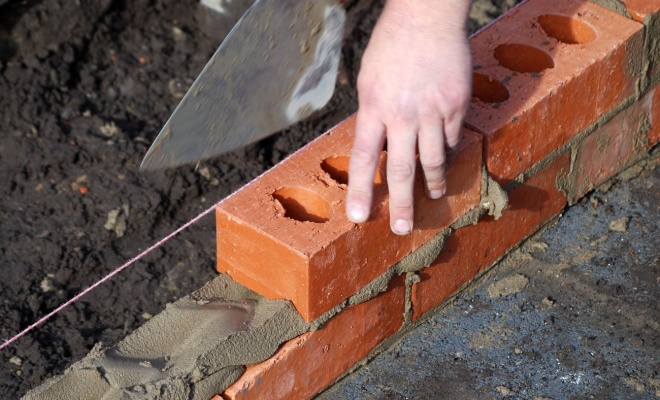
Brick bonding is the pattern of bricks in a structure.
Bricks can be laid in different bonds to create various aesthetics, as well as strengthen and stabilise a wall or column structure.
Here are the different bonding options:
- English bond: This is an extremely strong bond and requires facing bricks. The stretchers are centred to the headers in the course below.
- Stretcher bond: This is a common type of bonding, but isn't as strong as alternatives. The pattern is made with stretchers, and the joins on every course are centred above and below with half a brick.
- Header bond: This is similar to a stretcher bond in shape and size, but is used with headers instead of stretchers.
- Flemish bond: This is a strong bond formed by laying alternate headers and stretchers through each course. The headers are centred to the stretchers below it.
Things To Consider Before Hiring a Bricklayer
Before hiring a bricklayer, there are a few things to take into consideration.
It is a good idea to ensure the area around the boundary/wall is clear; this includes cutting grass and pruning any trees or bushes, which can be an obstacle.
Large bushes or trees near the boundary may also cause problems with laying the foundation and might need to be removed beforehand. You should consider having your bricklayer, or a professional take care of any other hard landscaping jobs at the same time to reduce disruption and costs.
If the wall is straight, then it’s a simple job for any competent bricklayer or DIY enthusiast. But if the wall is curved or has an unusual shape, then this will cost more (and a higher level of skill level will be required). Make sure to consider liability for accidents when hiring a bricklayer.
If the wall falls and causes damage or injury on-site, you could file a public liability claim. However, they may have insurance to cover their backs, so make sure to ask all these questions, so both parties are protected and on the same page.
You want to make sure your garden wall stays sturdy and protected during all climates so some materials may not suit certain weather conditions. Always check with your bricklayer beforehand on what the best material will be to suit your garden climate.
If you're building a wall that's public-facing you need to be extra cautious as if it falls and hurts anyone or causes any damage you may be liable.
DIY Garden Wall
Building brick walls dates back to around 7000 BC and is fairly straightforward to do yourself if you’re a regular DIYer.
If you are competent and confident enough, it may be worth learning how you can build your own brick garden wall. The steps involved are similar to what a labourer or bricklayer would do and doing it yourself can save yourself a significant chunk of cash.
However, there are many intricate things to consider when building a wall, so if you’re unsure, it’s always best to seek help from a professional rather than do it yourself.
Step 1 - Planning and Preparation
Planning and prepping is key to any DIY task. Figuring out the type of wall you want to build will narrow down the material options you should consider. Make sure to calculate the correct measurements for length and height so that the project will go as smoothly as possible (and stay on budget). Then, clear the site of all bushes, weeds and obstructions.
Step 2 - Laying Foundations
Use two lines and pegs to mark your bearings before beginning to dig the trench. This should be the same length as the wall, with a depth of around 35cm for walls 1 metre high and below. Pour in your concrete, making it at least 15cm thick. Make sure to let the air out from the concrete by working through it with your shovel.

Step 3 - Mix the Mortar
Mortar can be made by using one-part cement to five parts soft sand with a plasticiser. You can mix mortar either by hand or with a cement mixer on a level surface, and it should be used within two hours of making it. It’s important to be safe and wear appropriate PPE — such as safety goggles, a mask, and anything else you think is appropriate.
Step 4 - Lay the Bricks
To begin laying bricks, spread a thin layer of mortar and used the string line as a guide to place the block into position and tap down. The mortar should slightly release from between the joints, and any excess should be cut off with the trowel.
Step 5 - Build Up
Begin building your garden wall by layering each brick. Build up from the corners, and then fill in the rest of the wall, constantly checking and altering as you go. Finish the wall by using either a special coping or layer of capping bricks. This is good for preventing any frost damage from shedding rainwater.
New Garden Wall Benefits
Garden walls have plenty of underrated benefits that can enhance your garden area or the surrounding areas of a house.
- They’re great for manufacturing a solid barrier if you live next to a busy road or footpath, as they can provide more soundproofing.
- Walls are also perfect for dividing up a garden into different sections, allowing for areas like a seperate BBQ section or a pond installation.
- They’re visually appealing and can hide any areas of your house that may need some extra work.
- They can aid wind control, and a strong wall can block wind from your garden.
- Can enhance the value of your home, as they tend to be more durable than standard fences.
Cost of Building a Retaining Garden Wall
A retaining wall in your garden holds back soil if your garden is on a slope. This makes a level planting area in your garden space, getting rid of poor soil and drainage. These walls can be difficult to build as they need to be strong enough to resist horizontal soil pressure from varying ground levels.
A retaining wall is significantly more expensive and averages between £4,000 to £6,000 dependent on sizing, thickness and materials. Brick, concrete blocks, natural stone, and reconstituted stone are all appropriate materials for a retaining wall.
If you ignore the need for a retaining wall, you may deal with downhill soil loss, injury from heavy elements and arguments over property lines.
Before opting to build your retaining wall there are some factors you need to consider. Including:
Strengthening
A retaining wall has a big job to fulfil, not only does it hold the pushing from soil and grass, but it also faces the weight of gravity, moisture and the slope. Heavy material such as big retaining wall blocks, timbers or poured concrete is needed to stop any collapsing and counteract the pressure. If your wall needs to be extra strong and secure, you can place reinforcing rods or bars in the footing concrete.
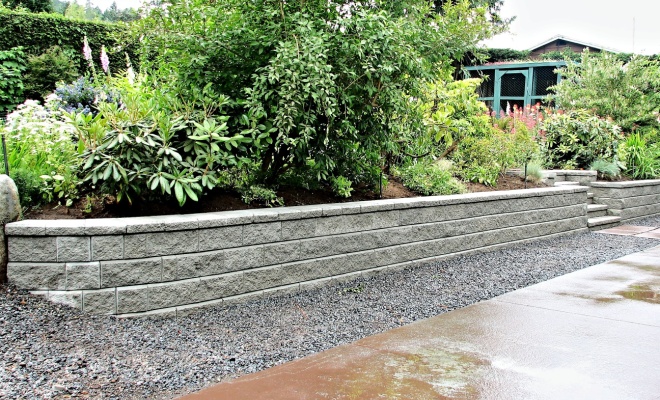
Restrictions
Badly built retaining walls can lean, crack, or bulge and become a big inconvenience and also not very nice to look at. They also come with risks as they have the potential to be hazardous by falling over. Because of this, local councils may require formal approval before a retaining wall is built if you’re near any roads or pathways. If building close to a boundary line, be sure to talk to your neighbours.
Waterproofing
Retaining walls are faced with all kinds of wear and tear from the outdoor environment, meaning it’s key to assure they’re drained and waterproofed. Water can add weight and pressure to the structure of the wall, creating cracks and bugling, which you definitely don’t want.
You can assure proper drainage by gravel backfilling, providing weep holes, installing perforated pipes with drainage cloth, and finishing off by applying a waterproofing membrane.
Party Wall Agreement
A Party Wall Agreement is covered by the Party Wall Act. It covers the decisions between shared neighbouring walls between flats, semi-detached or terraced houses. You’re required to tell your neighbours if you wish to carry out building work nearby on the shared property boundary in England and Wales. Most party wall surveyors charge between £150 - £250 for party wall matters at an hourly rate.
Boundary Walls / Party Walls
Boundary walls are used to separate two pieces of land and tend to be one of the biggest problems you’re faced when building or repairing a garden wall. If you and your neighbour are disagreeing on where the boundary is, you can buy property documents from the Land Registry to double-check.
If this plan shows the boundary to be a party wall, this means that legally there is a joint responsibility for the maintenance of the wall, and you’ll have to give written notice or come to an agreement with your neighbour. If ignored, your neighbour may take legal action.
Conservation Areas and Listed Buildings
If your house is in the curtilage of a listed building or in a conservation area, you’ll need planning permission for an alteration, including demolition of an existing wall or erecting a new one. Boundary structures can sometimes be older than the house itself meaning walls and railings have historical and architectural value and are listed in their own right.
The current penalty on conviction in a Magistrates Court is a fine of up to £20,000 or imprisonment for a maximum of six months. The punishments can apply to the owner, the builder and the architect or surveyor involved.
Garden Wall Repair Cost
Water disturbance and leaking are common issues for garden walls, and repairs can be a costly addition that you need to consider. Walls can be affected by scrapes, weather conditions, holes, and structural issues. All repairs range to different prices and can fall anywhere between £250 - £1200.
Common issues with garden walls include:
Cracking
Cracking can happen in walls when brickwork is aggravated and strained and can be repaired for between £70-100 depending on the scale. This occurs after various stress and movement, such as an increase in moisture content within the brickwork or footing and temperature changing.
Small cracks can be filled in with hydraulic cement. However, if the damage is 15mm wide or deep, you may have to hire a professional to come and check if the wall can be repaired.
Leaning
Walls can sometimes slant, which is inconvenient, dangerous and an eyesore. Causes for this can range from poor rooting, trees/bushes, bad drainage, or unstable footing. If your wall is leaning, it’s most likely that it will have to be removed and rebuilt. Pricing for this ranges from £800 - £1,200.
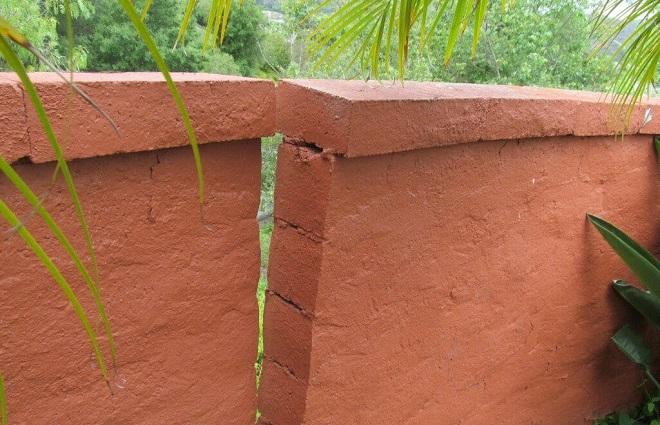
Sagging
Sagging can be caused by loads of issues such as structure problems, water disturbance, and faults in the design. The cost to fix it depends on the size, material and the method of repair and comes out around £90 per hour. However, if a leak or foundation issues have caused the sagging, that should be addressed by a pro first, or sagging will reappear.
Efflorescence
Efflorescence is a white flaky crust than can be seen on bricks not too long after construction. This is caused by water-soluble salts and moisture and can be removed by a pro. However, it might come back if the moisture and salinity aren’t addressed. To stop this from happening again, moisture flow should be cut off. A cleaning service will charge around £100 to fix this issue.
Alternatives to a Garden Wall
If the purpose of your wall is for privacy, there are options such as hedges and trees, which can make a secure boundary around your house. Fences are a good alternative for keeping people away from your dwelling.
- The average cost to install a garden hedge for a whole property is typically around £600 to £700 for a landscaper to plant a 15m hedge.
- The average cost to plant a small tree is between £50 - £70.
- The average cost to hire a tradesperson to supply and install fencing is typically around £700 to £1,000 for 8 fence panels, with the typical size being 2 metres long in the UK.
Walls vs Fences
Choosing between installing a garden fence or a building a brick wall is difficult; both options can be a great choice for providing security and privacy, a quality fence will certainly help ensure that your property is secured.
However, there is no denying that a brick wall is a pretty strong structure when built correctly too. However, this comes at a cost; in general, a wall will be much more expensive than a fence. Though on the plus side, you would expect a wall to last much longer, so in the long term, a brick wall is a cost-effective option.
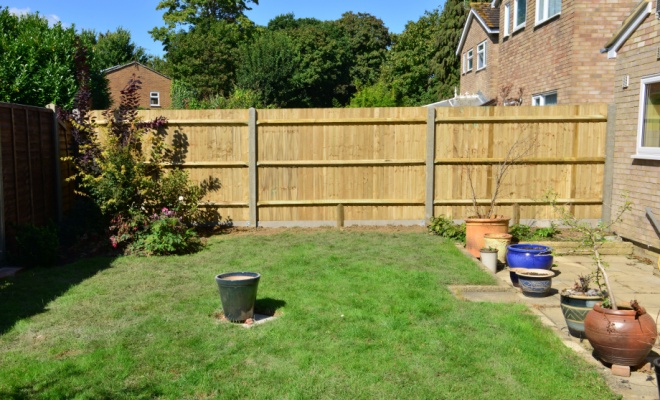
That being said you can buy gravel boards to protect the bottom of your fence from ground moisture and stop the wood from rotting, plus there are plenty of timber preservatives and treatments available to keep your fencing protected from the weather long term, plus wooden fencing can be much more environmentally friendly.
Ultimately, if the proposed structure is just to mark/enclose the property boundary and is not load-bearing at all, then it really comes down to personal preference in most cases.
Garden Wall Removal Cost
There are plenty of reasons why a garden wall could need removing or rebuilding.
Alongside the standard wear and tear and deterioration over the years, walls can be affected by bad weather conditions such as wind, snow, and rainstorms. They can also be impacted when nearby trees fall, or new ones get planted and start spreading out — causing obstruction and damage.
The cost of getting a landscaper to remove a 5-metre wall with a gate is around £900 - £1,200. This price typically includes the removal of the foundations and all of the waste removal (like a skip hire).
However, if you need an existing wall removed and remodelled, you may be able to re-use the bricks for around double this price.
Wall removal entails hammer drilling the mortar, removing the bricks one by one, removing the foundation with a jackhammer, and then collecting the waste for disposal
How to Find & Hire a Bricklayer to Build a Garden Wall
In most instances, it’s probably the safest bet to hire a bricklayer to build your garden wall rather than DIYing it. This way, the job gets done quicker, smoother and safer, but now the question is, how do I hire the best one for me?
You can use our ‘Get a Quote’ service to find the best person for the job. Ensure that the quote includes materials, labour, and waste removal.
But remember: Sometimes cheaper isn’t always better. Choose the bricklayer that you are confident will offer a high-quality job and at a reasonable price.
Before hiring a tradesperson to build a garden wall, make sure to:
- Get the quote in writing, with a breakdown of the costs involved.
- Ask for references or pictures that showcase their work.
- Check if the tradesperson is a member of any trade associations.
- Ensure they have public liability insurance and adequate coverage.
FAQs
Half-brick wall: 9m2 (surface area) x 60 (Bricks PSQM) = 540 bricks
Wastage: 10% = 54 bricks
Total number of bricks needed: 594 bricks needed
Sources
https://www.gov.uk/get-information-about-property-and-land
https://www.braintree.gov.uk/planning-building-control/conservation-areas
https://www.pavingexpert.com/featur03
https://www.aboutcivil.org/bricks-advantages-disadvantages-uses.html
https://www.diy.com/ideas-advice/how-to-plan-a-garden-wall/CC_npci_100134.art
https://brickhunter.com/blog/how-to-calculate-the-number-of-bricks-you-need
https://todayshomeowner.com/lawn-garden/guides/how-to-build-a-stackable-block-retaining-wall/





